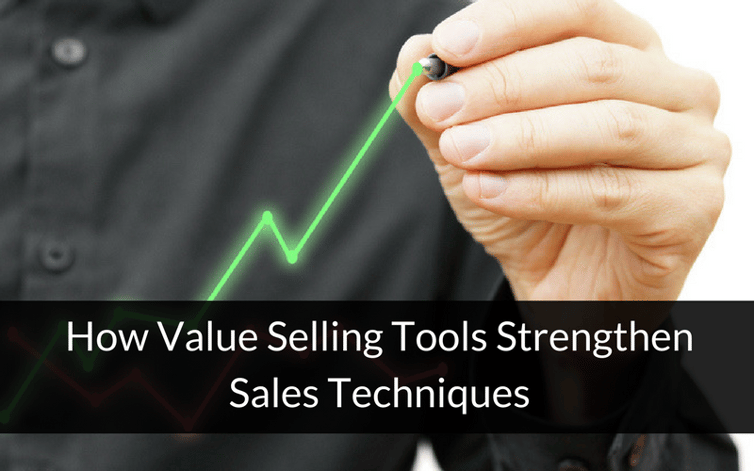
How many sales techniques and methods have you trained in, read about, or considered for your sales team? There are lots of them out there, each purporting to help you get in there and lock down that sale.
Recently, I ran across a review of well-known sales methodologies for closing complex sales by David Peralta, the content marketing manager at iSEEit. He talks about several methods into which I believe value selling tools would neatly fit.
Read on for an overview of six sales methods from Peralta’s guide and how value selling tools and calculators can enhance these practices.
1. TAS - Target Account Selling
TAS is now Altify but still has the same framework. TAS works well for breaking down large deals into their key components and identifying decision criteria. The sales rep uses the information to develop an “opportunity plan” to guide the entire sales process with each client.
Its biggest advantage is that it can take a buyer’s political landscape into consideration, often the factor upon which a sale is won or lost.
Tool Alignment
A value calculator shows the operations-oriented decision-makers how your solution improves production. Furthermore, ROI tools and TCO tools provide information essential to building out a business case that speaks to the financial advantages of your product or service. The sales rep uses information from all tools to build the “opportunity plan” as part of the business case.
2. SPIN Selling
SPIN stands for:
- Situation
- Problem
- Implication
- Need-pay-off-questions
That last point seems to be stretching things a bit to fit the acronym, but SPIN Selling’s strong point is discovering the customer's pain points and helping determine a solution. SPIN is more of a communication technique than selling, but it teaches your sales team to listen and engage rather than offer a monologue of features and benefits.
SPIN allows you to uncover needs, establish trust, and guide the buyer to a solution that is aligned with your product or service.
Tool Alignment
An assessment tool shows the buyer the Situation, defines the Problem, and highlights the Implications of the problem. It uncovers the pain points and sets the path toward a solution.
3. Miller-Heiman Strategic Selling
Miller-Heiman helps sales in complex selling environments with multiple decision makers. Training includes showing sales reps to look for vulnerable areas of a deal, or what Peralta called a “red flag.”
It lays a solid foundation to pursue the complex sale.
Tool Alignment
Information gleaned from the buyer through assessment tools and value calculators provides the foundation for a business case that defines the problem and a solution while ROI tools and TCO tools provide it with data of interest to the financial team.
4. MEDDIC
Another acronym, MEDDIC stands for:
- Metrics
- Economic buyer
- Decision criteria
- Decision process
- Identify pain
- Champion
As you can see by the expanded definition, MEDDIC is a highly structured sales process that leads your sales team through the whole sales cycle. It is particularly useful for qualifying deals more effectively than other sales methods.
MEDDIC is known for its strong closing plans and keeping a spotlight on the health of your deal.
Tool Alignment
A value calculator shows the Economic buyer how your solution offers more than the price implies. Meanwhile, an assessment tool gathers Decision criteria and Identifies pain.
5. Command of the Sale/Command of the Message
A combination of sales qualification and messaging, Command of the Sale/Command of the Message helps sales teams:
- Qualify their pipeline
- Focus on the right opportunities
- Identify pain points
- Guide the buyer through the validation and decision process
Command of the Sale helps guide sales teams away from selling focused on the product, emphasizing a customer-centric selling approach instead.
Tool Alignment
Assessment tools and value calculators help buyers define the problem and how well your solution resolves it, qualifying them into your pipeline. The sales rep then builds the validation and decision process using ROI tools and TCO tools.
6. The Challenger Sale(TM)
My personal favorite, the Challenger Sale, tells sales teams to educate their buyers with valuable insights. They help refine the buyer’s original definition of the problem to build a business case for your solution. (For a more in-depth look at the Challenger Sale and how it works with ROI Selling, see our post here.)
Conclusion
There are many different sales methodologies you can use to approach your complex sale. The ones discussed in this post typify the concepts used in value selling in which you help your buyers identify their problems, show them the value of resolving them (and avoiding a price discussion) while helping them build a business case to convince the financially-motivated decision maker to select your offering over others.
Ultimately, in order to work, sales techniques need the proper sales tools for successful implementation.









